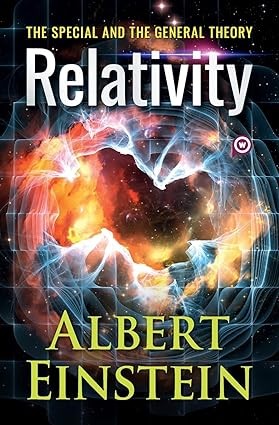Relativity
by Albert Einstein | 15-Mar-2024
(0)
First published in German in 1916, and later translated into English in 1920, ‘Relativity: The Special and the General Theory’ is a short paper and was eventually published as a book by Albert Einstein, German-born, best known for his work on the ...
Sold by
BlueRose Hot Collection
Hottest picks from BlueRose partnered companies
(1 customer reviews)
Original
Books
Fastest
Delivery
7-day
Replacement
Book Details
- Language :
- Pages :
- ISBN :
- Genre:
- Size :
- Binding Type :
- Age Group: + Years
- Paper Type :
- Interior :
- Cover :
- Book Type :
- Tags : Relativity
-
Best Sellers Rank :
#1298 in Academics
#8234 in Global
Reviews
There are no reviews for this product yet.
Sold by
BlueRose Hot Collection
Hottest picks from BlueRose partnered companies
(1 customer reviews)

 USD
($)
USD
($) AUD
($)
AUD
($) CAD
($)
CAD
($) EUR
(€)
EUR
(€) HKD
($)
HKD
($) MYR
(RM)
MYR
(RM) GBP
(£)
GBP
(£) SGD
($)
SGD
($)








